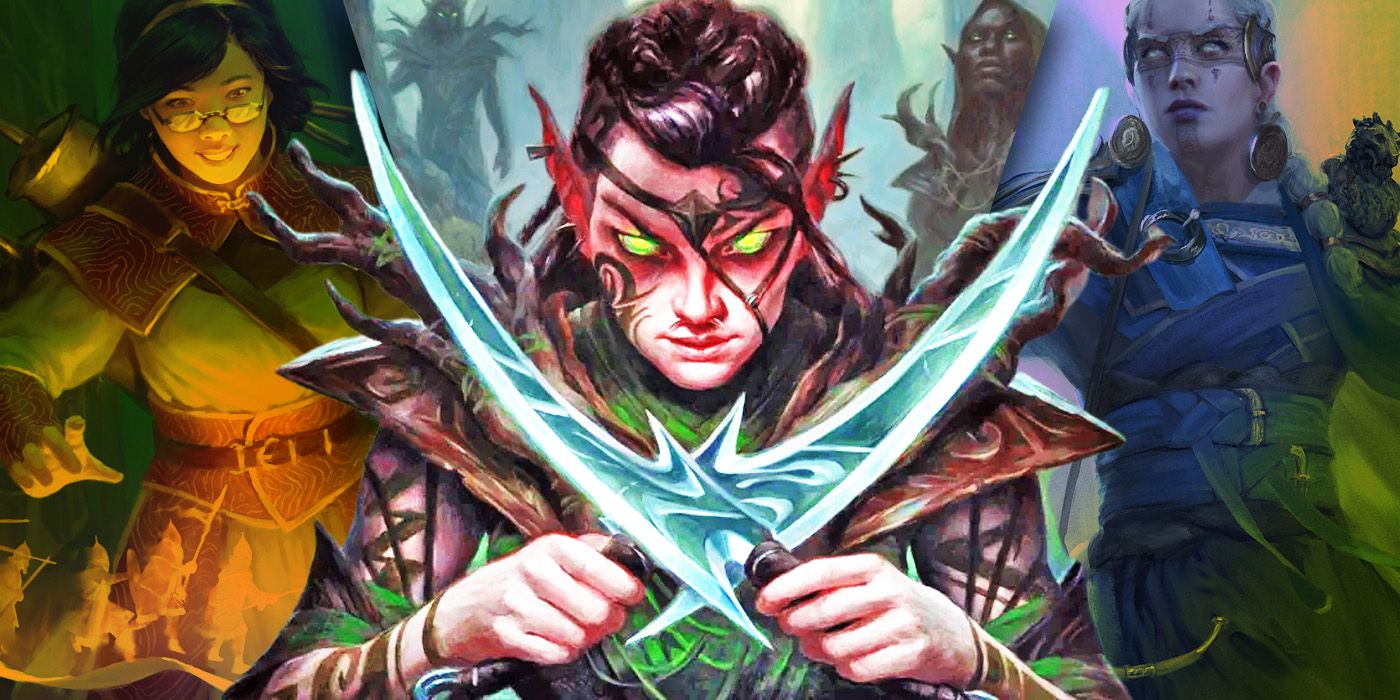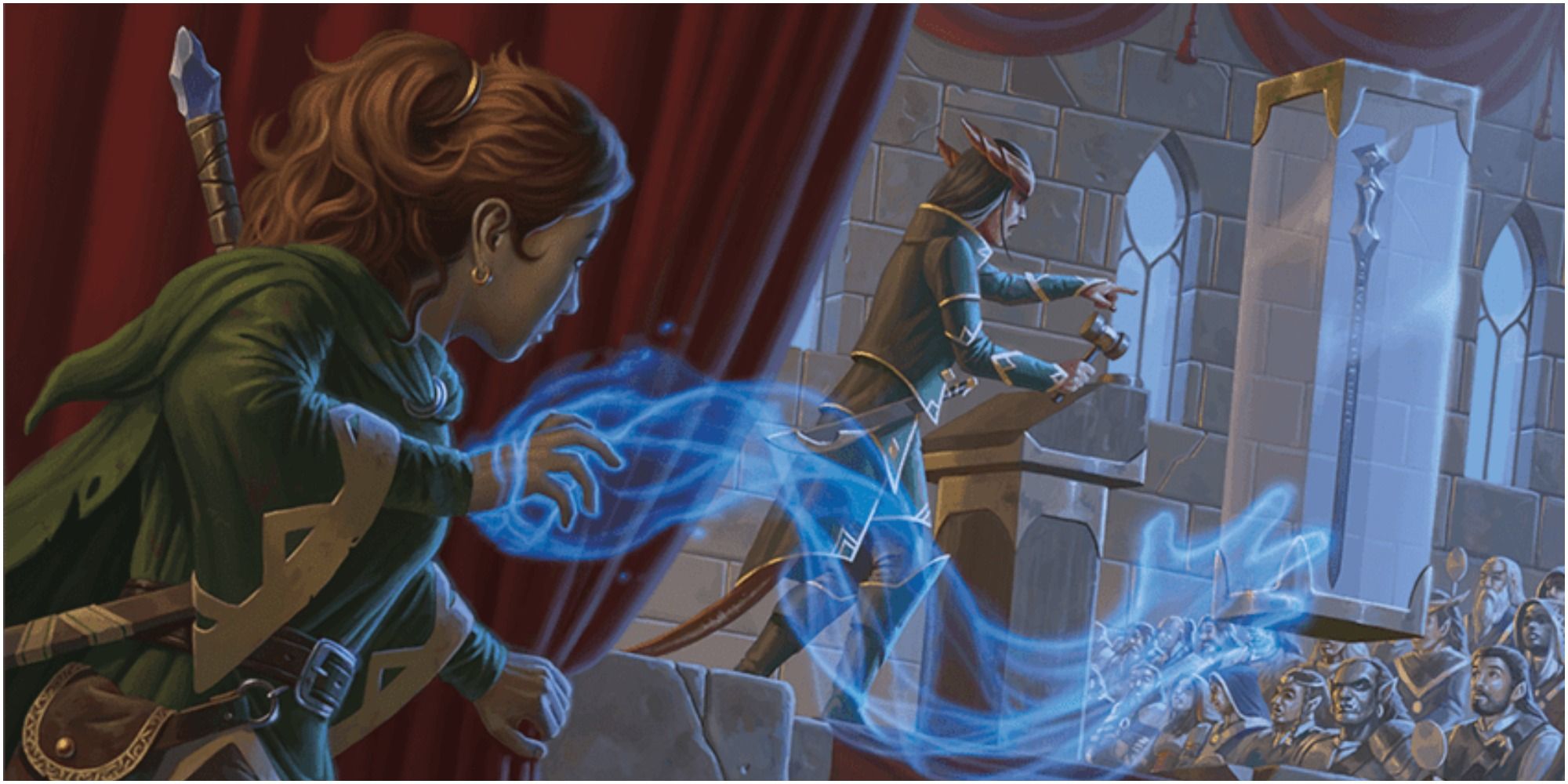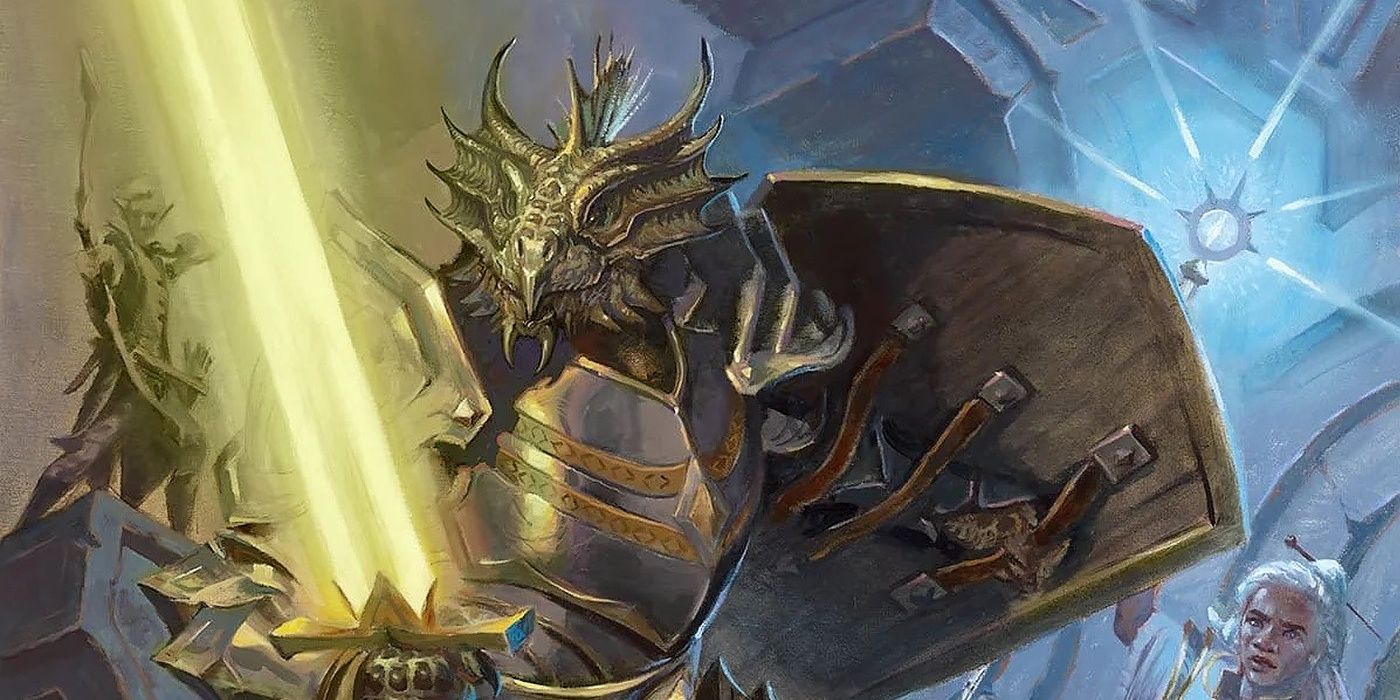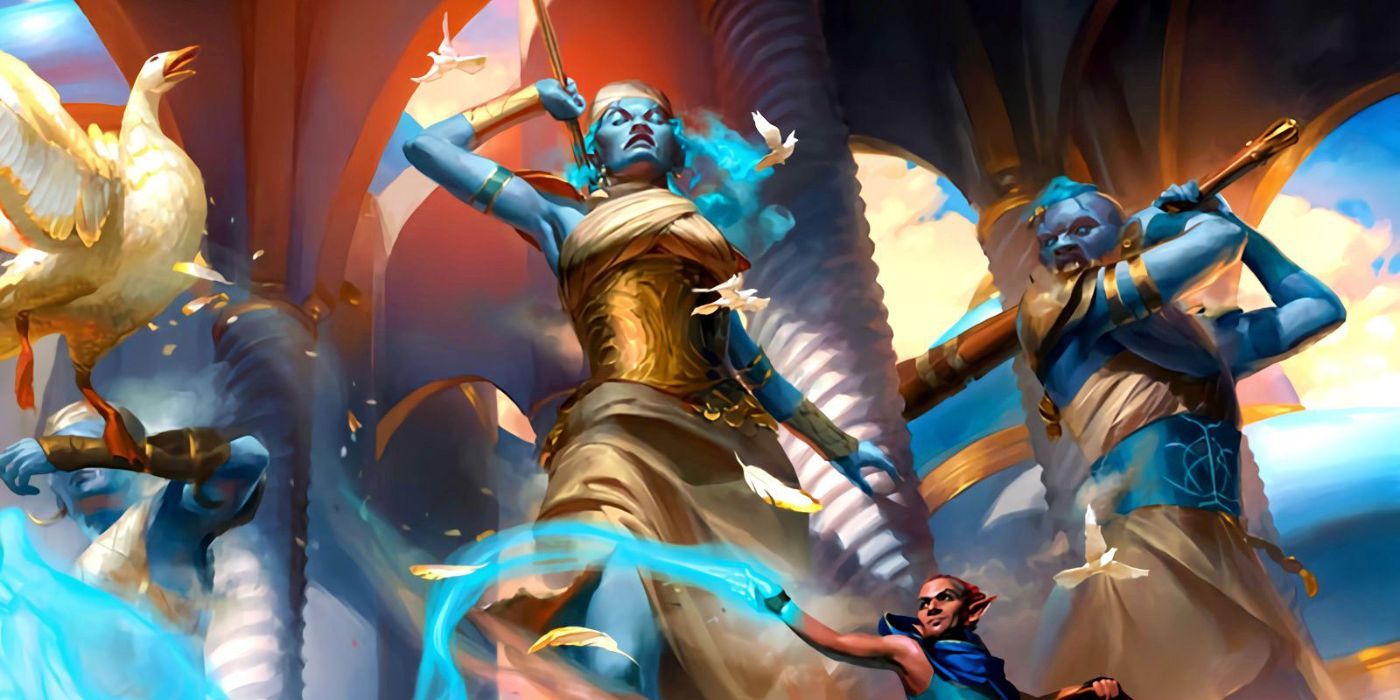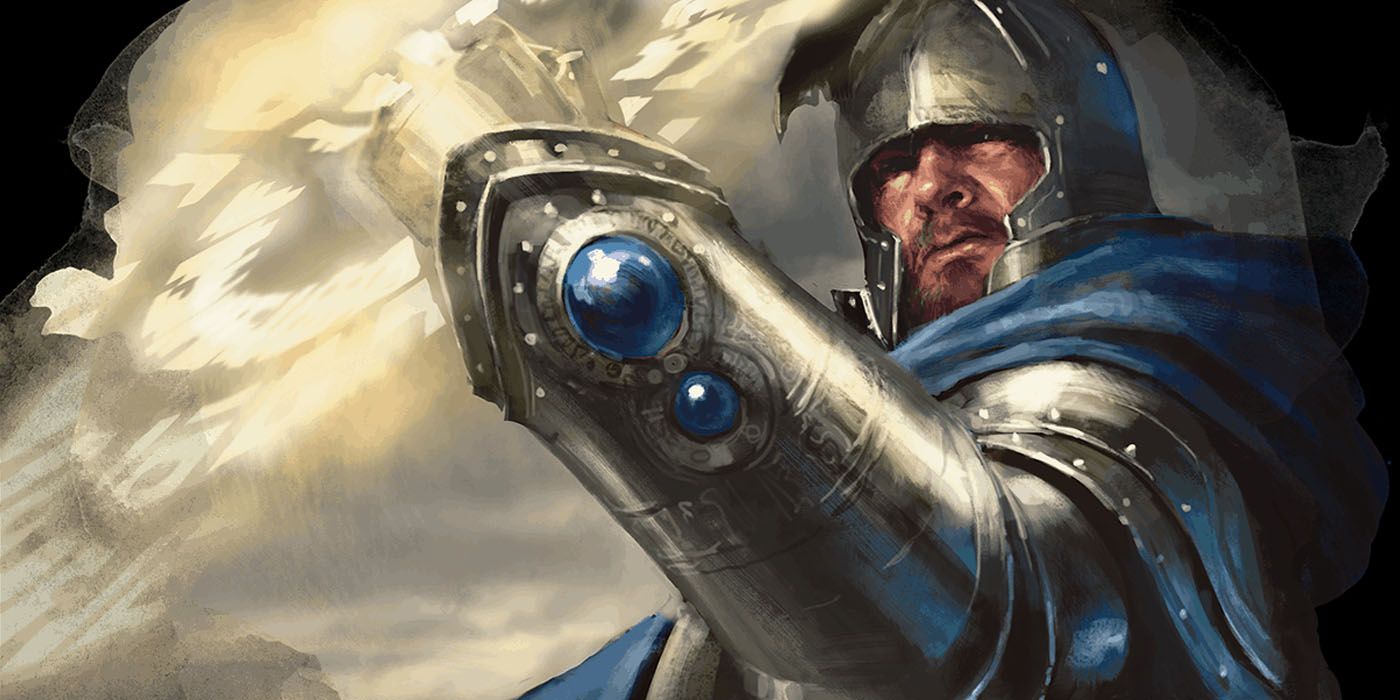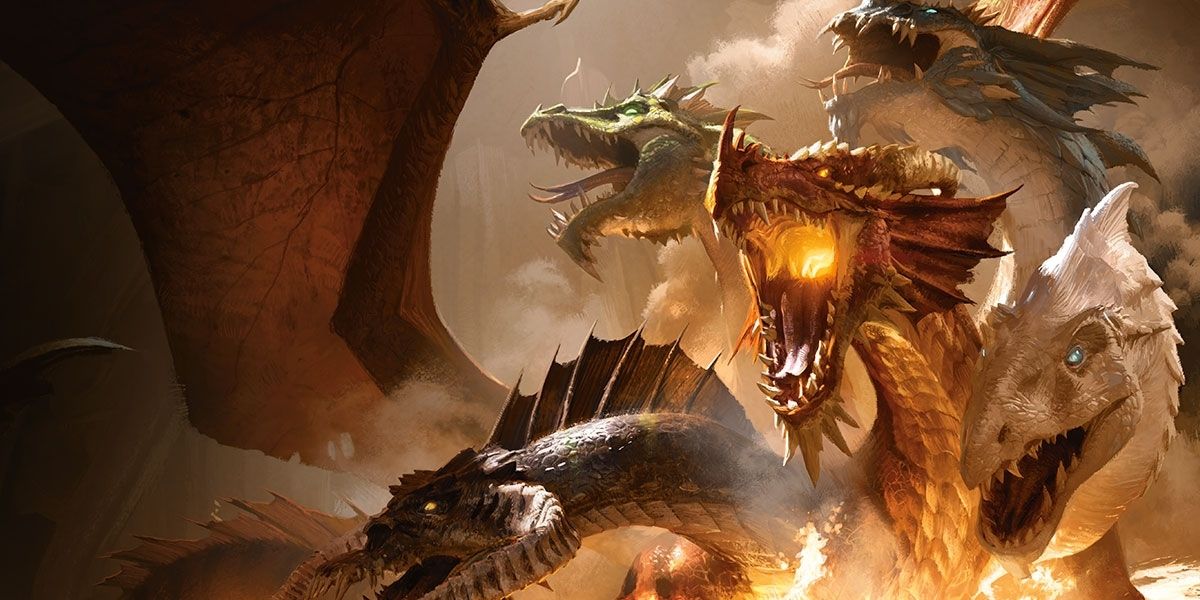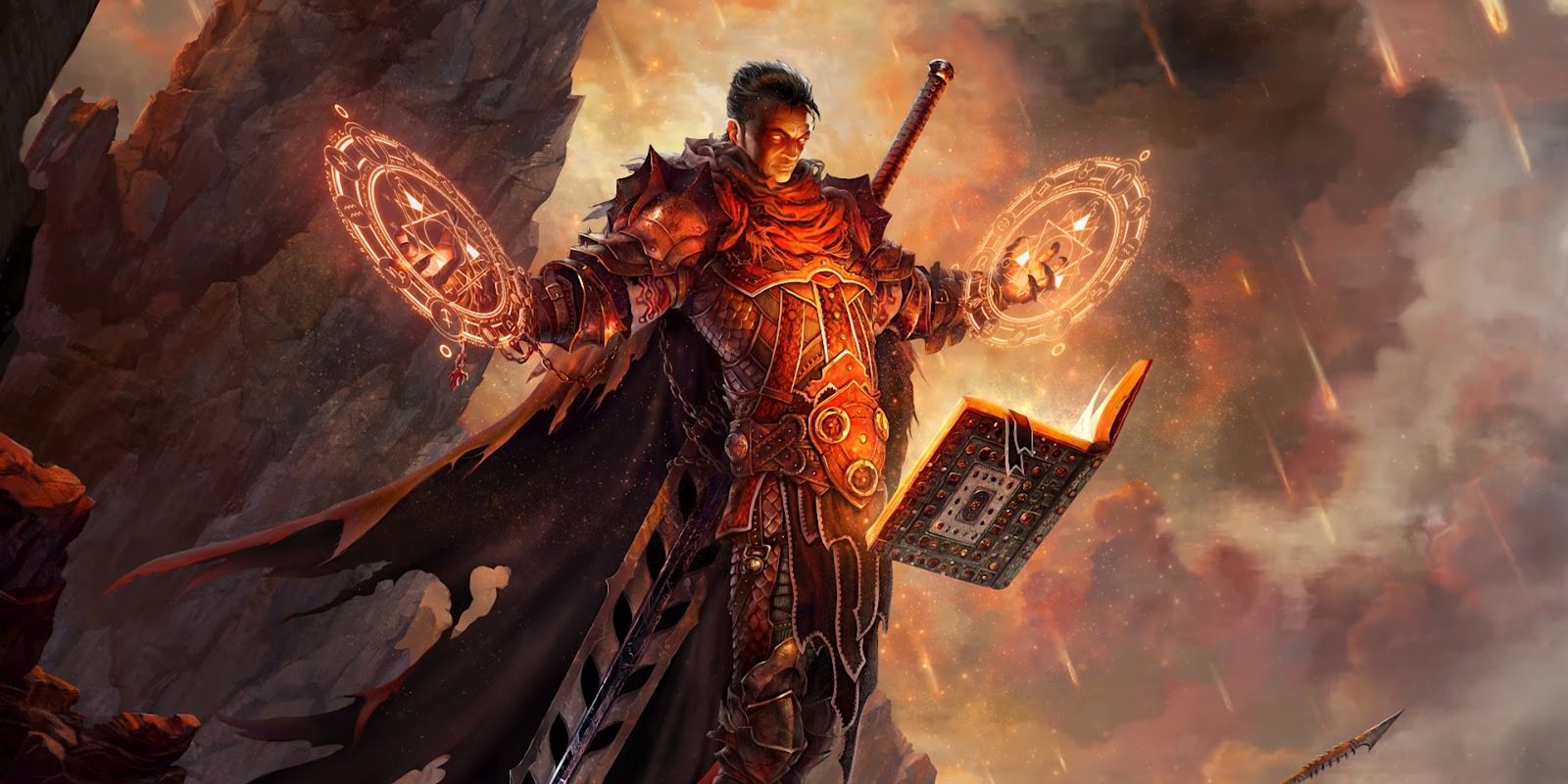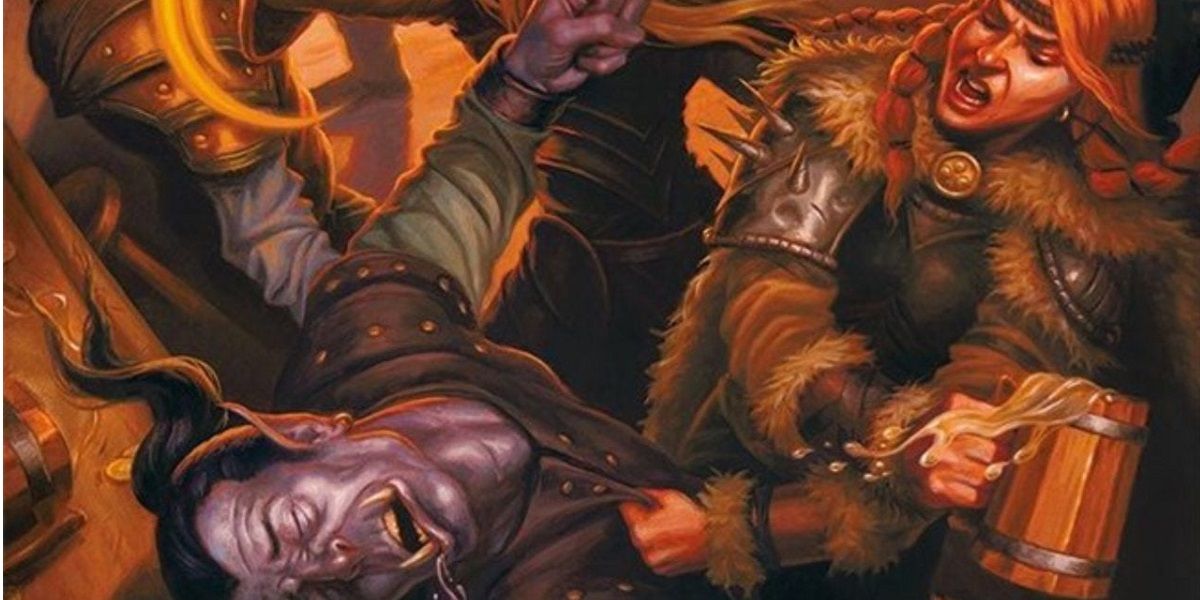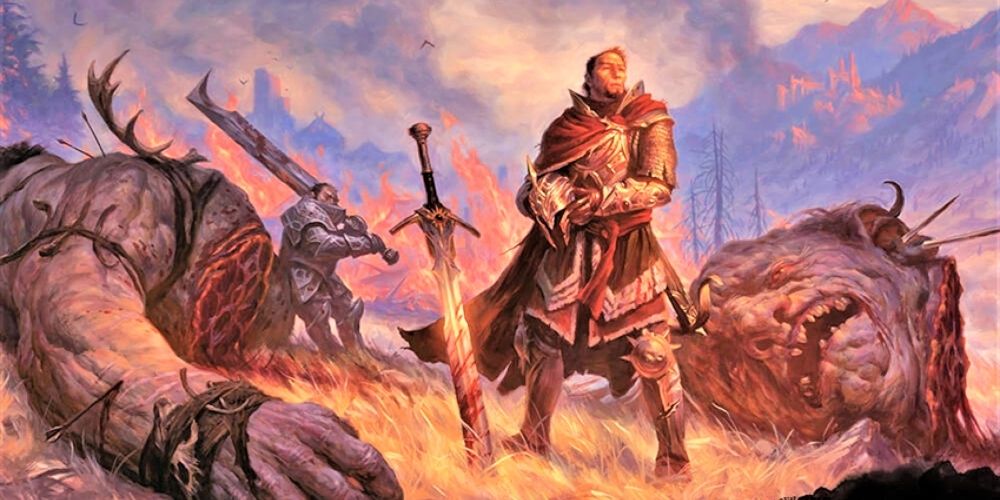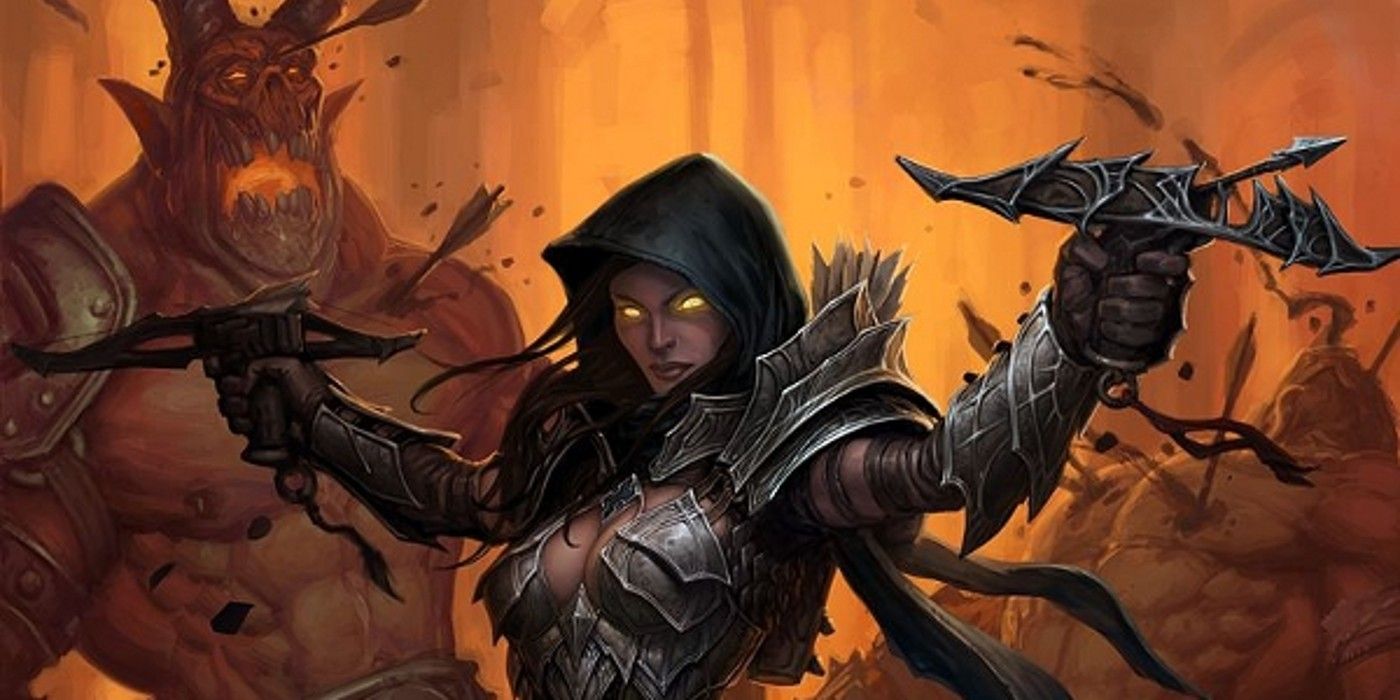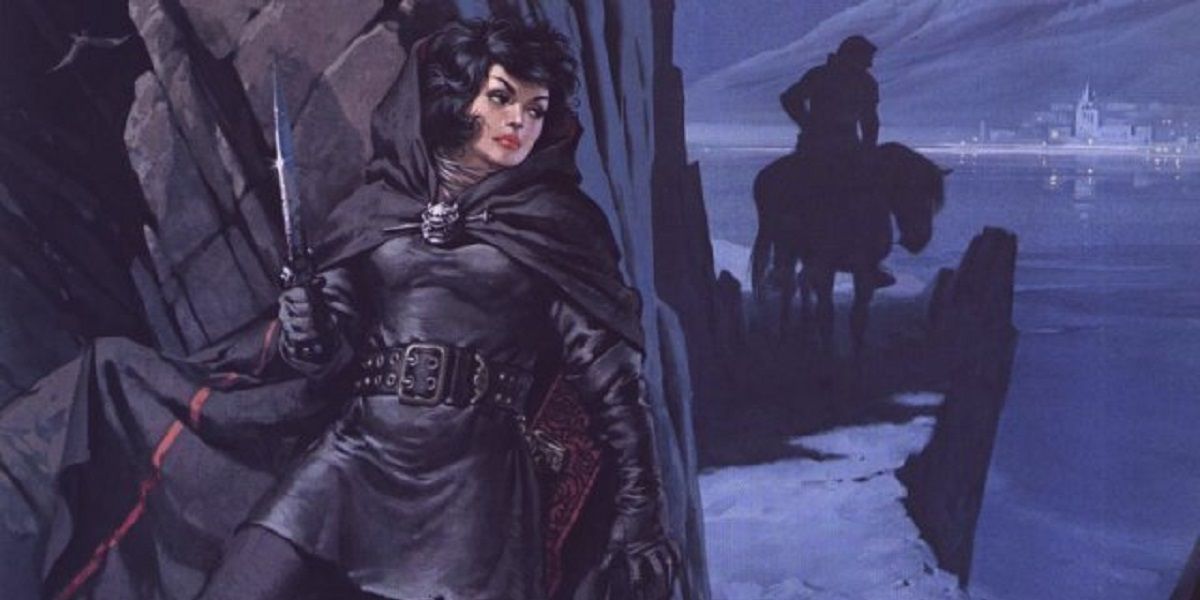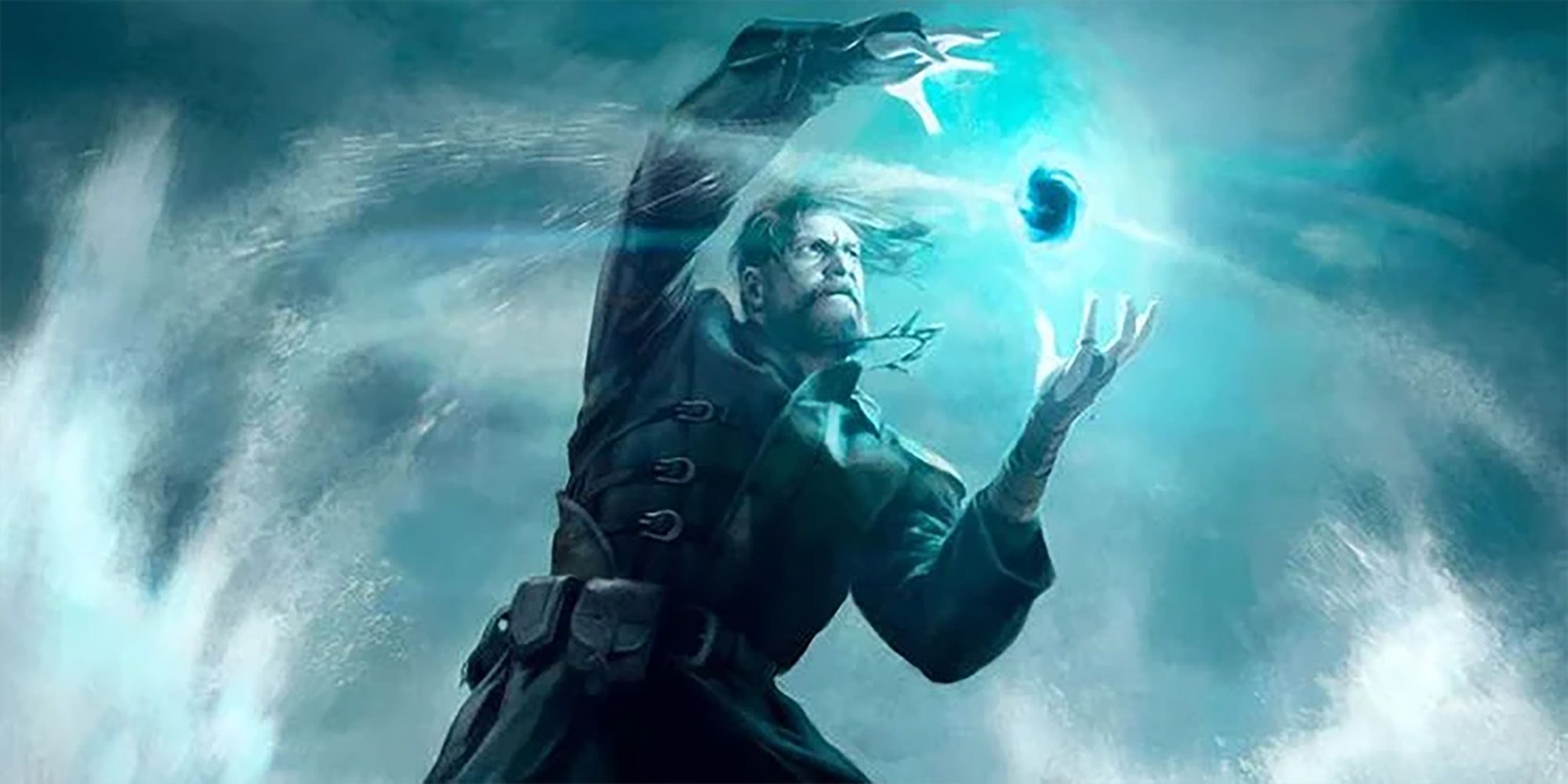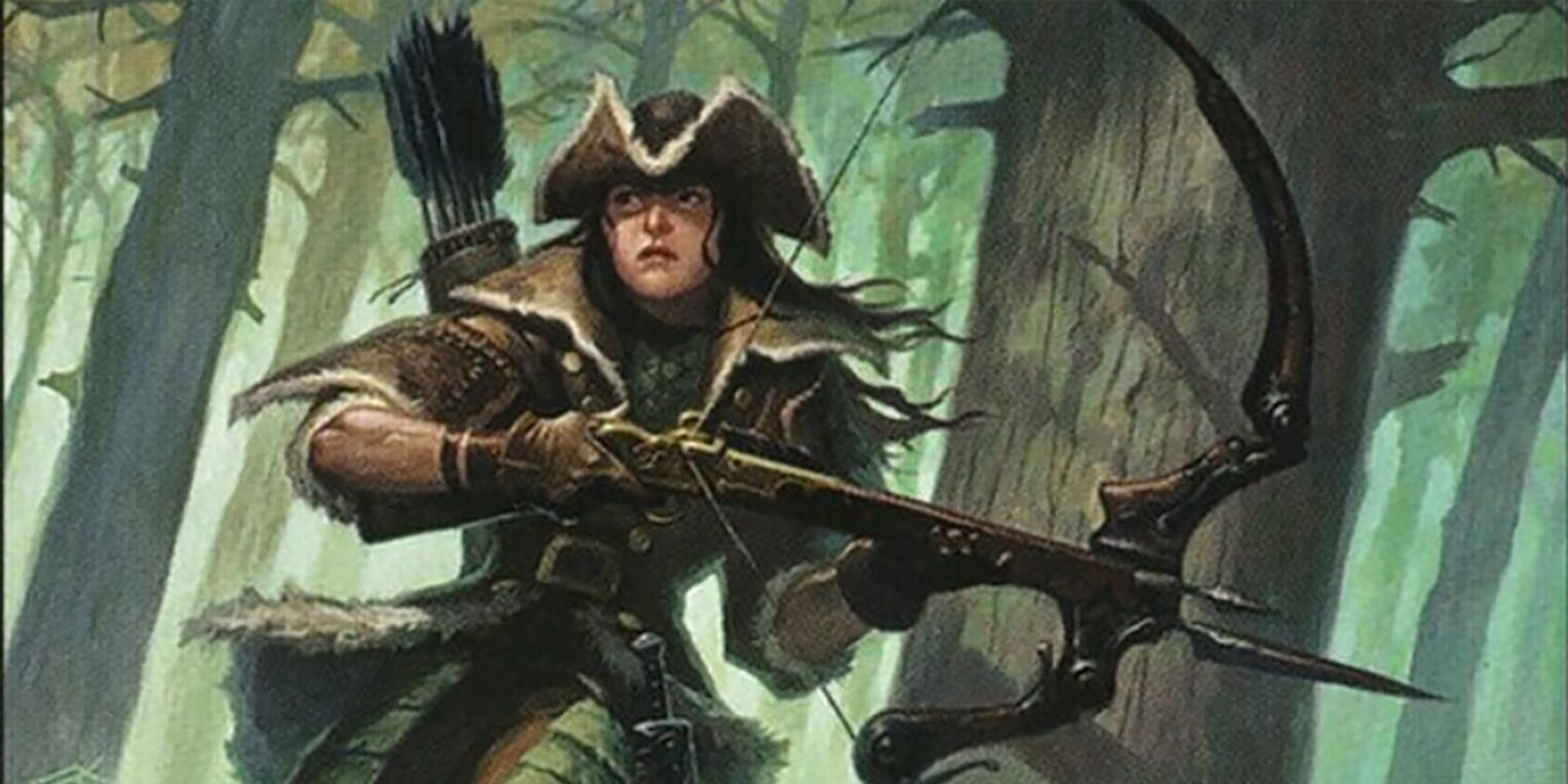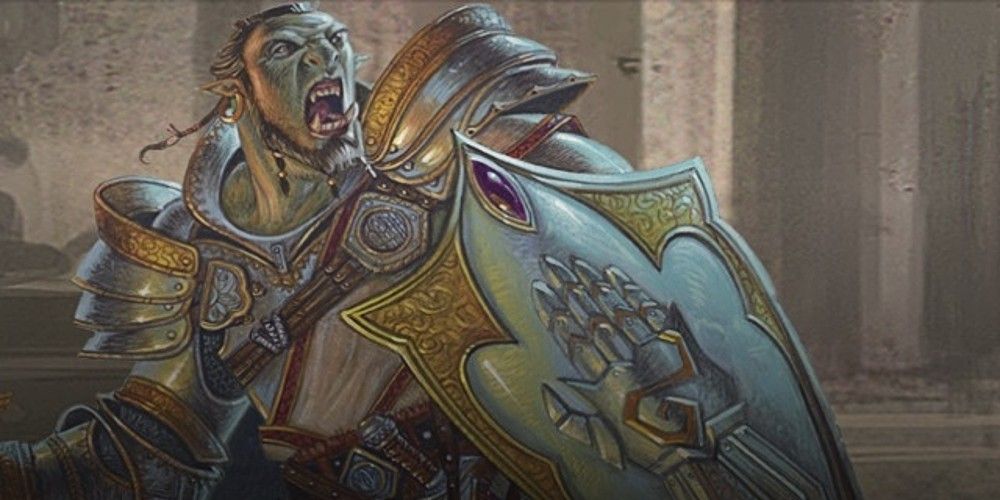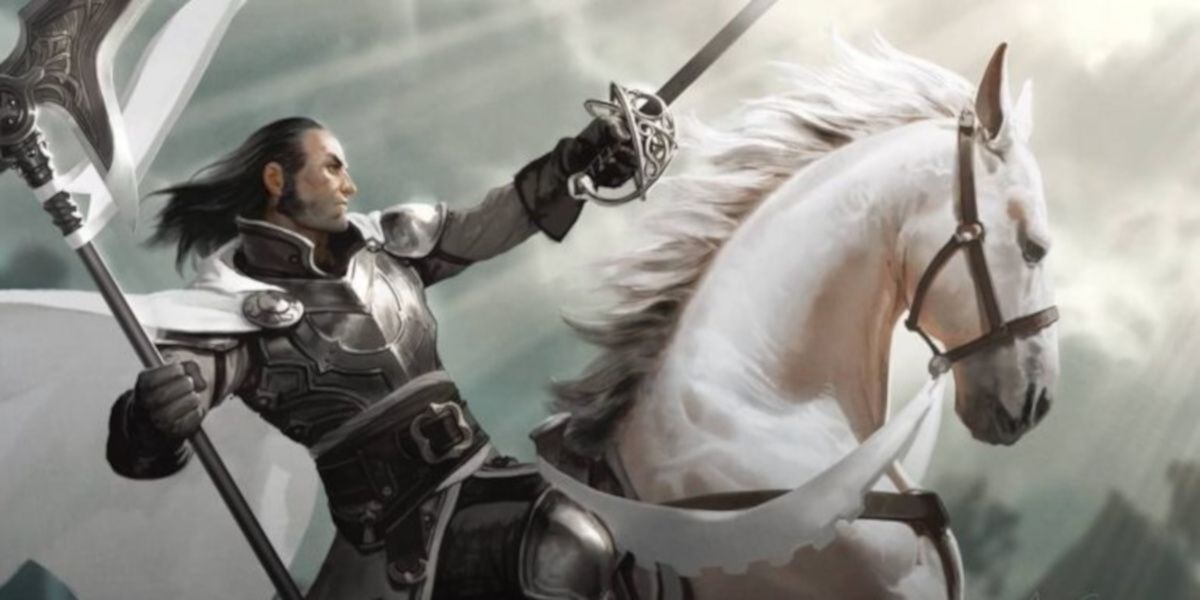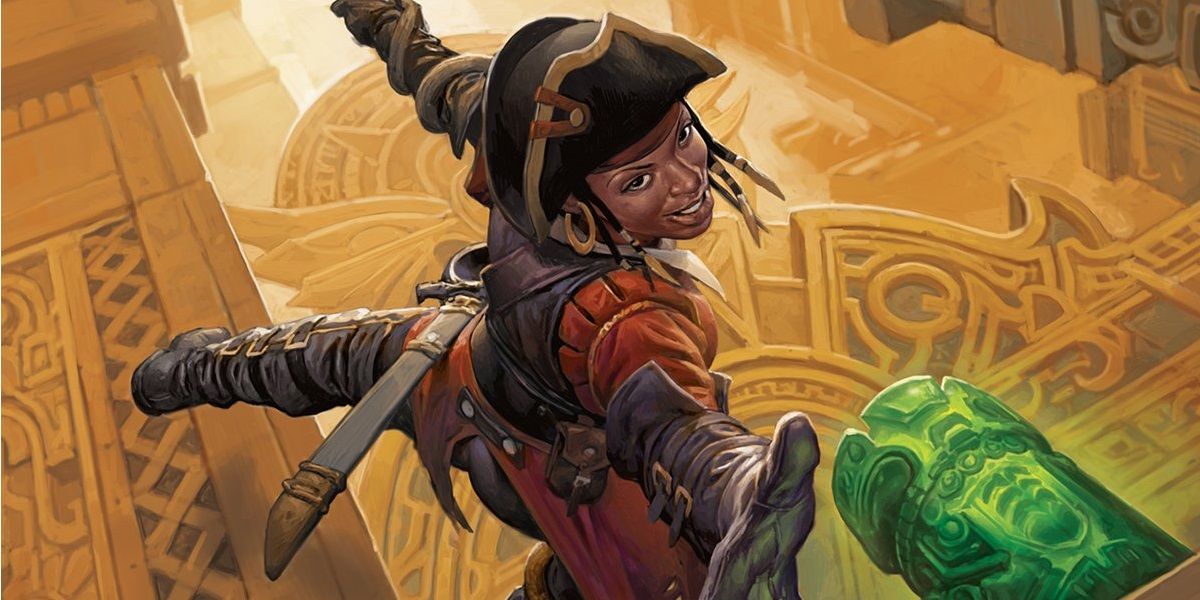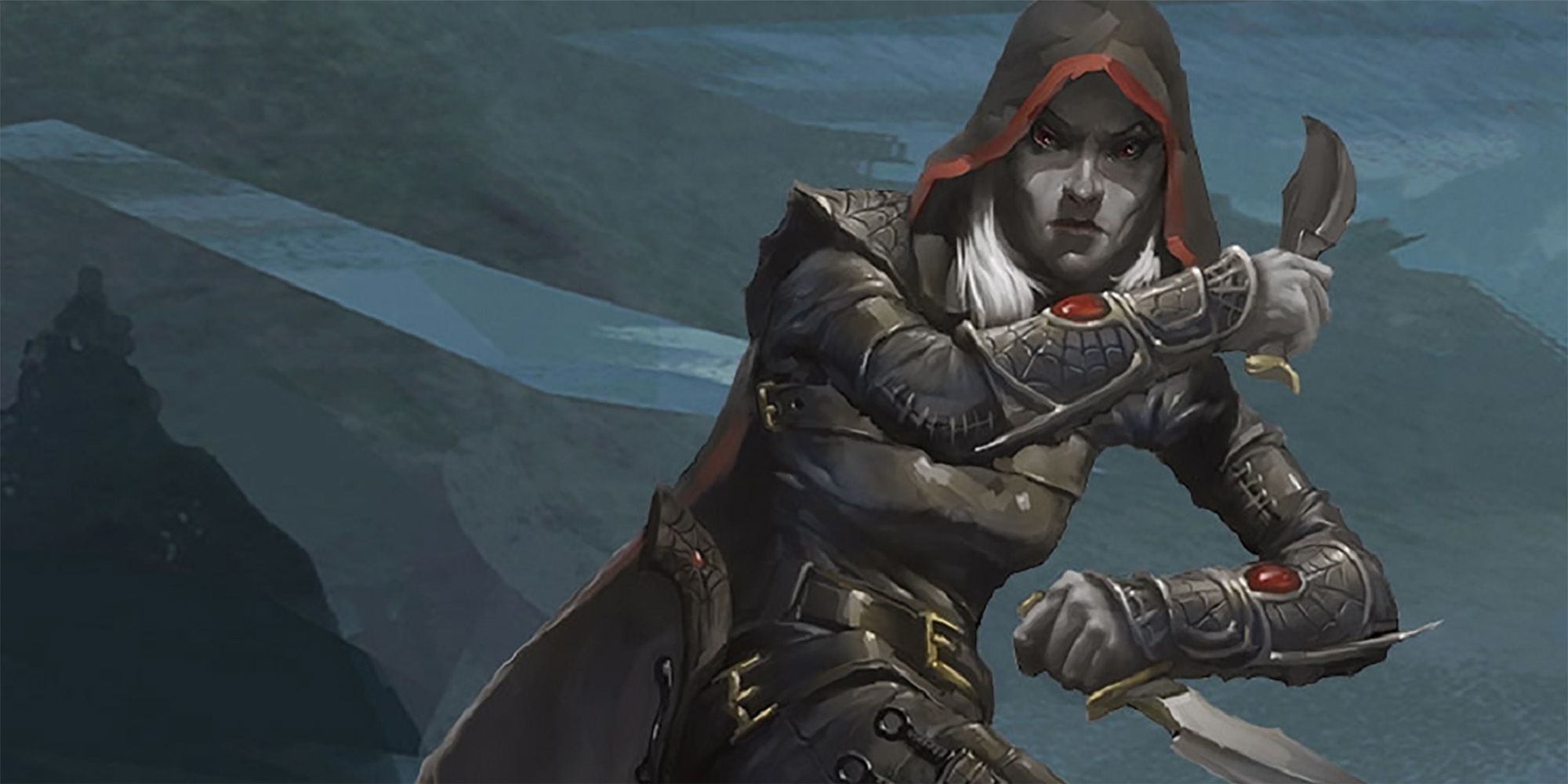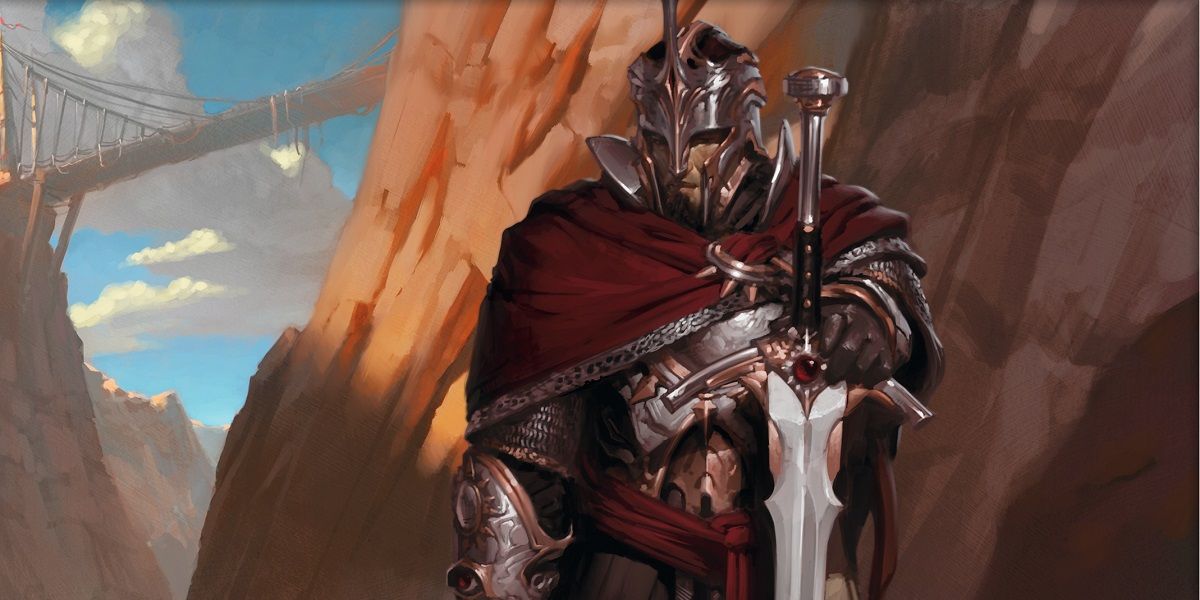In Dungeons & Dragons Fifth Edition, feats are one of the prime ways of customizing a character. They're optional abilities that players can take for their characters instead of gaining Ability Score Increases. They give powerful and wide-ranging features unlike anything seen in any of 5e's classes or subclasses.
The best D&D 5e feats are great opportunities for players to fully customize their characters in terms of both flavor and mechanics. Of course, every class and build requires a different selection of feats. Some are better for melee-focused front liners like fighters and barbarians, while others help expand a spellcaster's roster. But there are some feats that are almost always a good choice, no matter what build or role a character is aiming for.
Updated on January 6th, 2024 by Louis Kemner: Feats are the best way to customize a character in D&D 5e, though a player character can only have a few of them, so each one counts. To help players pick the best DnD feats for their characters, this list has been updated to adhere to CBR's current publication standards.
25 Elven Accuracy Maximizes The Odds Of An Attack Hitting
Xanathar's Guide to Everything, pg. 74
More About Elven Accuracy:
- One relevant ability score gets boosted
- Great for rangers, druids, rogues, and wizards
- Optimal for rogues in particular, who often attack with advantage
As per its name, the Elven Accuracy feat only works for elf or half-elf characters in D&D, but when it does apply, its effects are formidable. First, this is one of many D&D feats that grant ability score boosts — in this case, +1 to either DEX, CHA, INT, or WIS, which are great for typical elf archetypes such as rangers (including most subclasses) or druids, or even wizard characters.
However, it's actually elf rogues who benefit the most from this feat, since this feat works when the player rolls with advantage. For example, an elf rogue can easily perform a sneak attack, then use Elven Accuracy to re-roll one die and maximize the odds that their Dexterity-based attack will hit when missing is not an option. This feat can be fun for elf characters, but that also makes it incredibly narrow, so it ranks quite low among the game's best feats. Good feats aren't usually so restrictive.
24 Telekinetic Grants Mage Hand To Non-Casters
Tasha's Cauldron of Everything, pg. 81
More About Telekinetic:
- Gives magic to non-spellcasters
- Includes Mage Hand
- Can push enemies into AoE or out of partial cover
The Telekinetic feat has some serious application for anyone who can't normally get the useful Mage Hand spell, and the character who takes this feat doesn't even have to be a spellcaster, since the Telekinetic feat has no prerequisites. First, the character gets a +1 boost to INT, CHA, or WIS, and then they can use the chosen ability to telekinetically push someone within 30 feet of them.
Any target that fails the STR saving throw will be pushed 5 feet closer or further away, which can be used to shove an enemy right into an AoE spell or even push them out of partial cover. Also, with Mage Hand built into it, this feat is useful for non-combat scenarios as well, such as disarming traps from a distance during a dungeon crawl.
23 Inspiring Leader Boosts HP With Some Motivating Words
Player's Handbook, pg. 167
More About Inspiring Leader:
- Ideal for paladins and bards
- Best used before a battle
- Scales up throughout the campaign
The Inspiring Leader feat is one of the best feats for Charisma-based characters such as paladins, bards, sorcerers, or even warlocks if the roleplay allows it. A character can spend 10 minutes giving a rousing speech to their allies to apply a bonus, so this feat is best used before battle, not partway through a fight.
Up to six characters, including the speaker, will gain temporary hit points equal to the speaker's level plus their CHA modifier. Since the boost is based on level, the Inspiring Leader feat scales up all throughout a campaign, though proportionately, it gets slightly weaker over time. Still, the total temp HP gained may be formidable, and can really keep the party alive during tough encounters.
22 Magic Initiate Lets Any Class Dabble In Spellcasting
Player's Handbook pg. 168
More About Magic Initiate:
- Easy access to magical ranged attacks
- Enhanced utility and combat
- Expanded spell options without requiring multiclassing
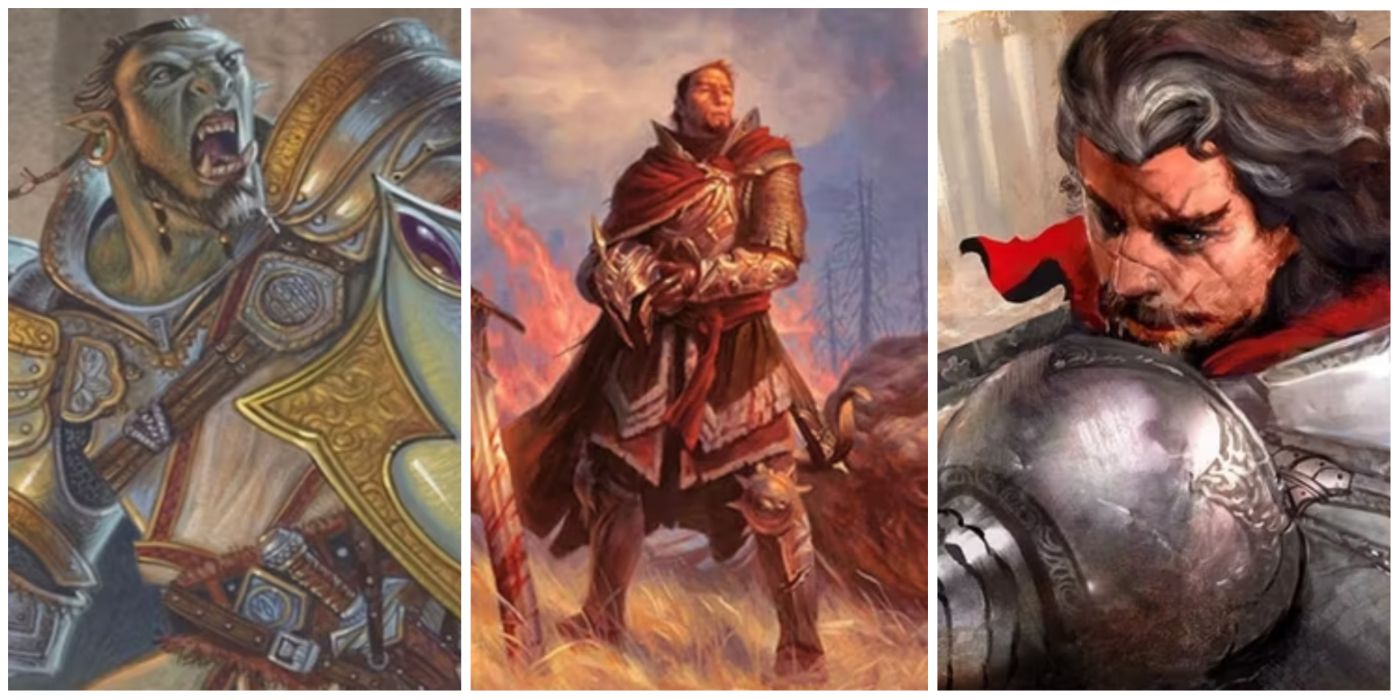
20 Best Feats For Paladins In D&D 5e, Ranked
In Dungeons & Dragons, feats are an invaluable asset in character customization. For the paladin, many feats offer a game-changing opportunity.Magic Initiate allows a player to choose another class and learn one first-level spell and two cantrips from that class's spell list. This versatility lets almost any character fill holes in their loadout. Melee characters can get ranged cantrips, spellcasters can get a panic button melee attack, and combat-focused classes can learn some utility spells.
Finally, the paladin can get some cantrips, the barbarian can get a little magic in their life, and the warlock gets one extra spell slot at the first level. Since the spells chosen will use the same ability score the class does, characters are somewhat limited in which classes they can pick from. However, that doesn't stop this from being one of the best feats in 5e. It's especially useful for smaller parties who might lack a designated healer or utility caster.
21 Rune Shaper Grants New Spells With Giant-Style Runes
Bigby Presents: Glory of the Giants, pg. 18
More About Rune Shaper:
- Must be a spellcaster or rune carver first
- Choose from several spells to cast via runes without spell slots
- Can change those spells when leveling up
The Rune Shaper feat is one of the best feats from the Bigby Presents: Glory of the Giants book, even if it comes with some prerequisites for use. Anyone with a Rune Carver background or a spellcasting feature can take this feat, and then take advantage of how flexible it can be.
The character may carve one or more runes onto their equipment, and choose from several spells on a rune table to cast without using spell slots. When the player gains levels, they can change spells with these runes, making this DnD feat even more adaptable. The best spells to choose include Chromatic Orb, Inflict Wounds, and Disguise Self.
20 Resilient Makes Saving Throws Easier To Pass
Player's Handbook pg. 168
More About Resilient:
- Provides proficiency in a saving throw of the player's choice
- Increases the ability score associated with the saving throw
Saving throws are a big part of survival in DnD 5e, and they see a lot of use both in and out of combat. However, most characters only get proficiency in two saving throws. They have to rely on their ability score modifier alone — which often won't be enough in the later levels of the game.
Resilient lets players gain proficiency in one ability score of their choice. Wisdom is an excellent choice to prevent many status effects like Paralyzed and Charmed. Constitution prevents many harmful effects and helps spellcasters with their Concentration. This feat can help a tanky character broaden their defenses, or ensure a more fragile caster has a little more survivability. However, for all its perks, Resilient does nothing on offense, and players love offensive abilities, so Resilient ranks fairly low among the game's most worthwhile feats.
19 Gift Of The Chromatic Dragon Boosts A Player's Defense Against Certain Elements
Fizban's Treasury of Dragons, pg. 17
More About Gift of the Chromatic Dragon:
- Resist one of five elemental damage types
- Works great against high-damage effects like dragon breath attacks
- Adds 1d4 damage to weapon attacks
Gift of the Chromatic Dragon is one of the best D&D feats for players who like defensive abilities, though it's also useful on offense. With this feat, the character can use a reaction to gain resistance to fire, cold, lightning, poison, or acid damage when they're hit by an attack or effect of that type, which may spare the character a lot of damage in many cases.
On offense, the character can use Gift of the Chromatic Dragon with a bonus action to infuse a simple or martial weapon, so it deals 1d4 fire, cold, lightning, poison, or acid damage on hits. That can add up in a hurry for fighters who use Action Surge or barbarians who use the Frenzy aspect of their rage to attack with their later bonus actions.
18 Flames Of Phlegethos Is Great For Fire-Loving Tieflings
Xanathar's Guide to Everything pg. 74
More About Flames of Phlegethos:
- Grants additional benefits while not losing out on an ability score boost
- Helps increase reliability of damage
- Keeps enemies out of melee
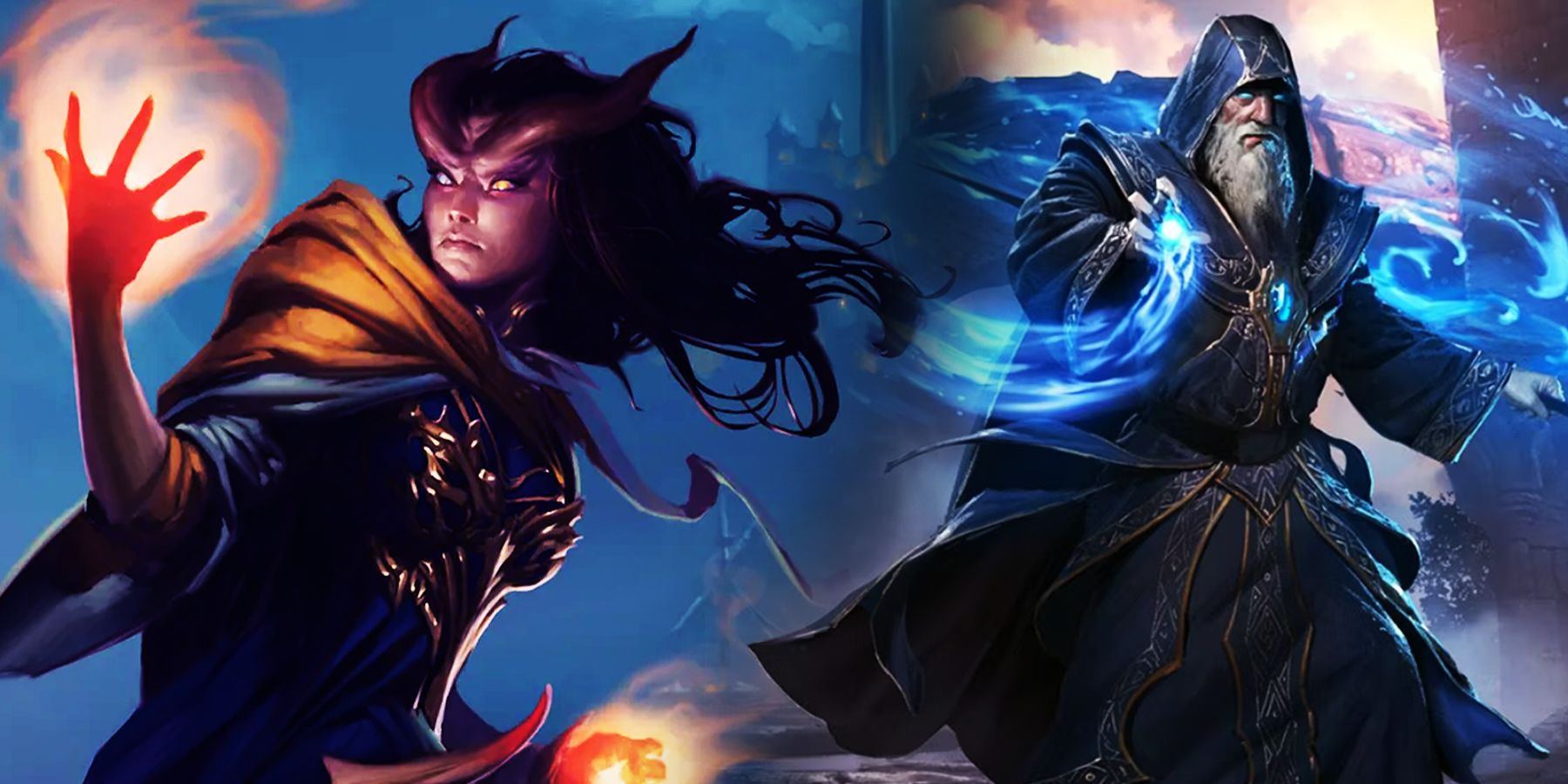
15 Best Feats For Wizards In D&D 5e, Ranked
The best feats wizard feats 5e has to offer either give the character new options or help enhance their existing features.This feat is available only to the tiefling race, but it is extremely worthwhile for any that focus on fire magic. Besides boosting Charisma or Intelligence, Flames of Phlegethos helps ensure the user never rolls minimum damage on their fire damage attacks.
Additionally, Flames of Phlegethos allows the user to surround themself with flames, dealing damage to anyone who dares get close. Fire is already the most prolific damage type in 5e's spells. Any caster with Flames of Phlegethos is already more effective with a huge number of offense spells, in addition to having a way to punish enemies who catch them off-guard.
17 Tavern Brawler Enhances Unarmed Attacks And Grappling
Player's Handbook pg. 170
More About Tavern Brawler:
- Lets non-monks deal serviceable unarmed damage
- Prevents a character from ever being without a weapon
- Makes grappling much more viable
This feat allows the user to grab anything they want and turn it into a weapon, adding their proficiency bonus to improvised attacks. It also upgrades their unarmed strike from doing only a single point of damage to using a d4. Perhaps the most useful bonus is the ability to grapple a target as a bonus action.
Grappling is powerful, but costing an attack can hold it back. Being able to tie up a target's movement in addition to making a full attack really opens up some room for fun builds. Combining this with a barbarian's advantage on Strength rolls while raging is perfect for building the best grappling build possible.
16 Great Weapon Master Grants Bonus Damage At The Cost Of Accuracy
Player's Handbook pg. 167
More About Great Weapon Master:
- A -5 penalty to hit with heavy weapons in exchange for a +10 bonus to damage
- Bonus action attacks following a critical hit or lethal blow
Most D&D fights come down to reducing the other side's hit points. Heavy two-handed weapons are already some of the most damaging weapons in the game, but Great Weapon Master ramps their threat up significantly.
The +10 bonus to damage rolls provided by this feat is huge, even at later levels. Great Weapon Master is one of the best feats in 5e because of how much more lethal it makes a melee fighter. Fighters, paladins, and barbarians all benefit hugely, especially if they have a way to boost their accuracy.
15 Crossbow Expert Is Essential For Any Midrange Archer
Player's Handbook pg. 165
More About Crossbow Expert:
- Gives a character access to an under-utilized weapon
- Helps facilitate a classic fighting archetype
- Increased versatility for characters who like to be in and out of melee range
Most characters looking for a ranged weapon in DnD immediately reach for a bow, but Crossbow Expert helps even the playing field. It eliminates the need to spend time reloading, allowing a character to make their full number of attacks each turn. It also allows crossbows to be used in melee at no penalty, something not easily done with bows.
Anyone looking to dual-wield can take advantage of its third feature, which basically allows the normal dual-wielding rules to apply to a hand crossbow as well. The classic "stab and shoot" build for a rogue relies on this feat to be functional, and it's well worth taking, hence its decent rank among the best feats. However, plenty of classes ignore crossbows in favor of other weapons or magical attacks, making Crossbow Expert useful, but fairly limited in use.
14 Alert Makes Sure The Party Is Never Surprised By Monsters
Player's Handbook pg. 165
More About Alert:
- Keeps the party safe from ambushes
- Lets any character serve as the party sentry
- Helps reliably act first in combat
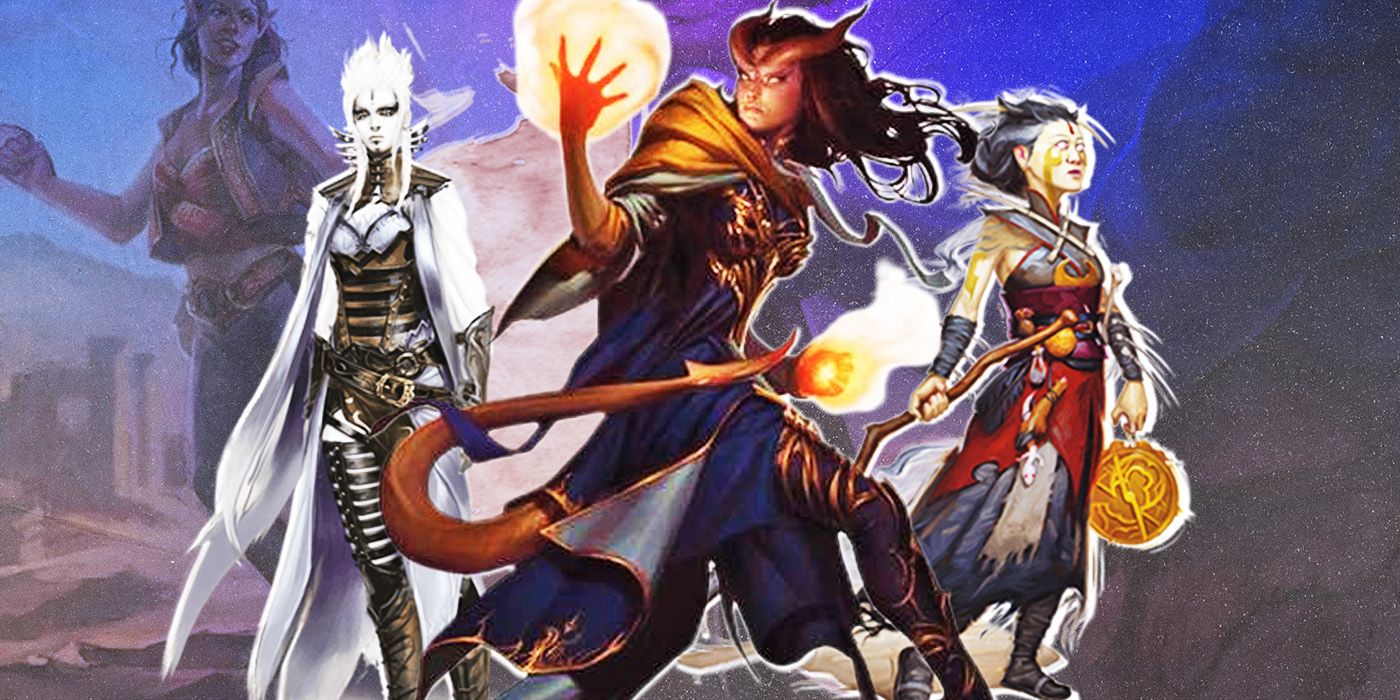
15 Best Feats For Warlocks In D&D 5e, Ranked
There are many feats in Dungeons and Dragons 5th Edition, but there are some that fit the warlock class better than others.Alert is perfect for any party whose DM likes to ambush them at every opportunity. It grants a +5 bonus to initiative, as well as negating most of the advantages other creatures get from surprising the character in question. It also prevents a creature from being surprised while unconscious. This mitigates the threat of ambushes, letting at least one character tilt the odds back in the party's favor.
This can be used to great effect on an already dextrous character to ensure they always go first. It can be equally valuable on a character with an otherwise terrible initiative score. A party really only needs one Alert character to help warn everyone else about impending danger.
13 Elemental Adept Lets The Player Master A Single Element On Offense And Defense
Player's Handbook pg. 166
More About Elemental Adept:
- Empowers single-damage type builds
- Helps get around various resistances
- Can be selected more than once for more well-rounded builds
The Elemental Adept feat is limited to casting classes, as it requires the ability to cast at least level one spell. Nonetheless, it can be extremely useful for casters. In particular, it benefits those who focus on one type of damage, like a Draconic Bloodline sorcerer or a Pact of the Fiend warlock.
Elemental Adept allows the user to ignore all resistances to that damage type, essentially negating the biggest drawback of focusing on one damage type. It also ensures that they never roll minimum damage on a spell, as it upgrades all damage rolls of one into twos. Casters that focus on a single element are a classic trope in fantasy fiction, and the Elemental Adept feat is essential for translating that to D&D 5e.
12 Sharpshooter Lets Archers Hit Any Target, And With Excellent Damage
Player's Handbook pg. 170
More About Sharpshooter:
- Ignores half and three-quarters cover
- Stops ranged attacks at long range being made at disadvantage
- Lets players take -5 to hit in exchange for +10 damage
Attacking from range is quite strong in D&D 5e, as it allows the attacker to deal damage without being hit in return. One of the biggest limiting factors on ranged attacks, however, is a battlefield full of covering terrain. In addition, ranged weapons impose disadvantage when used at their full range.
The Sharpshooter feat does away with both of these limitations. A character with Sharpshooter ignores everything except total cover and can attack at their weapon's long range without disadvantage. On top of that, characters can take an accuracy penalty for significantly more damage. Sharpshooter is easily the best feat in 5e for ranged attackers like rangers and rogues.
11 Tough Provides Lots Of Extra HP
Player's Handbook pg. 170
More About Tough:
- Gives an additional two hit points on every level up
- Applies to previous levels, potentially providing a large number of hit points at once
Hit points are an essential resource to maintain in D&D 5e. A character falls unconscious and begins to make death saving throws when their hit points reach zero. As such, most characters want to keep their hit points as high as possible. The Tough feat goes above and beyond in that regard.
Tough provides a character with two additional hit points per level, making it as effective in boosting hit points as four additional points in Constitution. It also applies retroactively to levels where the character didn't have Tough. It's one of 5e's best feats because almost nothing can match the extra hit points it grants.
10 War Caster Is Essential For Concentration-Based Spells
Player's Handbook pg. 170
More About War Caster:
- Enables melee-caster builds
- Helps maintain concentration for any kind of caster
- Allows armored casters to use somatic spells freely
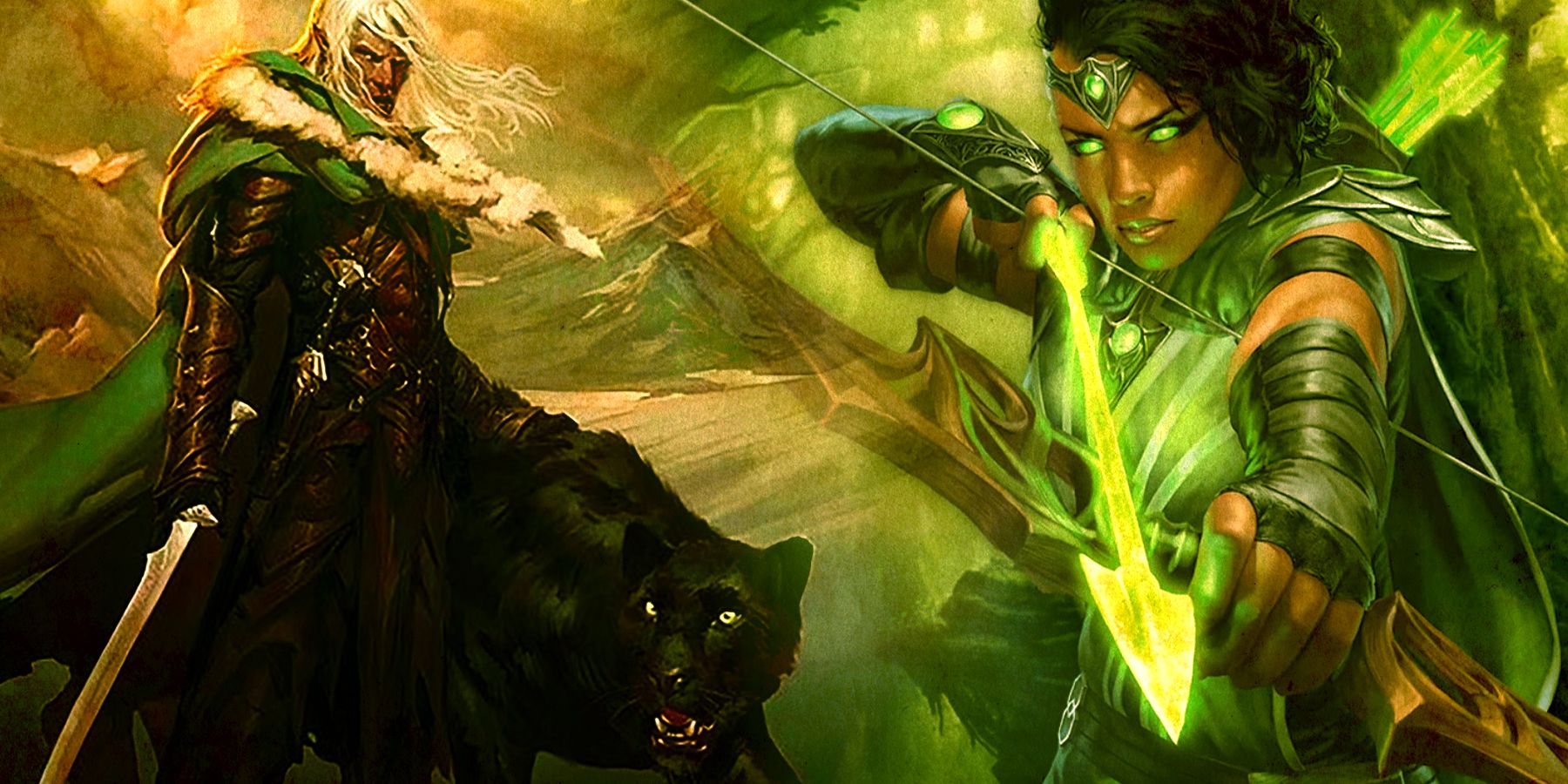
15 Best D&D 5e Feats For Rangers, Ranked
To make the most of the ranger class, versatility and customization are important, and incorporating feats can help one build the best ranger possibleEssential for any character looking to cast spells while engaged in melee combat, War Caster has several amazing perks. First, it grants advantage on Concentration saving throws. This is hugely useful for any spellcaster as it makes their most powerful spells last longer. It's most useful for melee characters, as they take damage and have to make Concentration throws more often.
Perhaps the most powerful feature, however, is the ability to cast spells as opportunity attacks. This opens up a huge variety of options in combat, as the spell cast need not be exclusively a damage spell. Being able to bind a creature with Hold Monster as a reaction can be an extremely powerful combat trick for locking down mobile foes, so War Caster ranks fairly high among all D&D feats, with only the best-ever feats ranking even higher.
9 Lucky Can Always Bail The Character Out Of Trouble
Player's Handbook pg. 167
More About Lucky:
- Useful on any character or build
- Can be used defensively or offensively
- Useful in and out of combat
Rolling dice is the core mechanic of D&D, so a feat that essentially offers free rerolls is always going to be extremely powerful. Lucky grants the user three luck points, which can be used to reroll almost any d20 roll. Lucky is applicable in basically every situation, from trying to fix a missed attack to fishing for success on an important skill check.
Lucky can even be used on attacks made against the character, helping them avoid nearly certain death. The sheer versatility of Lucky is what makes it so good. It's one of D&D 5e's best feats for any build in the game.
8 Athlete Keeps Characters Mobile, Even When Knocked Prone
Player's Handbook pg. 165
More About Athlete:
- Keeps the character mobile
- Allows a character to run and climb with ease
- Helps keep up ability score increases in addition to other effects
Besides boosting Dexterity or Strength by one, Athlete provides a slew of small benefits that will be of use to just about any character looking to improve their mobility. Adventurers who focus on the dungeons part of Dungeons & Dragons will love that climbing no longer costs them extra movement. Furthermore, they can make long jumps with shorter run-ups.
More combat-focused heroes will enjoy being able to stand with only five feet of their movement. This allows them to spring to their feet after being healed and enter the fray immediately. Being able to leap, climb, and run to reach any location is useful on almost any character, especially at low levels when mobility spells are few and far between.
7 Healer Can Help Revive Allies Without Healing Magic
Player's Handbook pg. 167
More About Healer:
- Access to reliable healing at low levels
- Allows a non-magical character to serve as the party healer
- Saves money on potions in the early levels
The healer's kit is already a great item in D&D 5th Edition, as it allows the user to stabilize a dying creature instantly. However, the Healer feat allows the user to use a healer's kit to heal party members more proactively.
Healer's kits have 10 uses, and a character with the Healer feat can spend one use to heal a target for a solid amount. This feature is limited to once per rest per character. However, it's an excellent choice for a party lacking in magical healing, or as a backup in case of emergency. Healer drops off in usefulness as more powerful healing magic becomes available, but it can be a lifesaver at early levels.
6 Sentinel Prevents Enemies From Rushing Past The Party's Characters
Player's Handbook pg. 169
More About Sentinel:
- Allows any character to defend their allies
- Allows a melee character to lock down enemies almost at will
- Grants a ton of battlefield control
Sentinel lets a character protect their allies and restrict the movement of enemies. It grants the user several abilities that allow them to lock down any opponent that tries to evade them. It even allows them to make reactive attacks against a creature that attacks anyone but them.
Picking the Sentinel feat sets the character up to serve as the party's tank. A character with Sentinel can keep enemies in place and punish them for trying to harm more fragile allies. It pairs extremely well with the Polearm Master feat to create a near-impenetrable spear wall.

